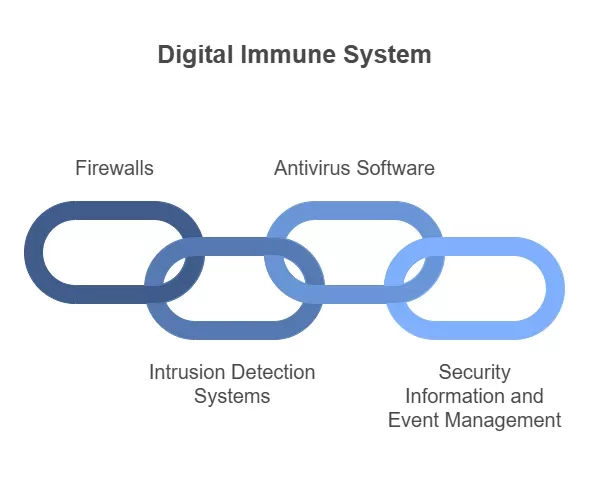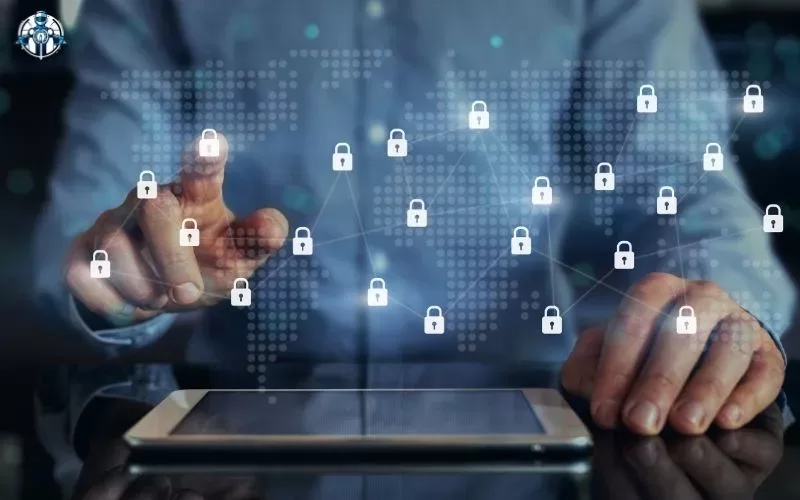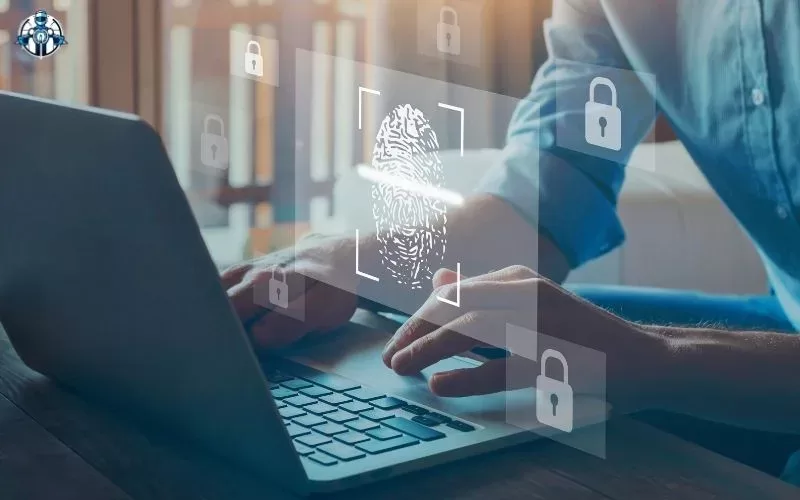Digital threats are common in organizations. Cyber attacks are common and if not well handled they can lead to a lot of damage. Therefore, companies require a Digital Immune System. This is a system that assists in identifying threats and combating them, in a way similar to the immune system. Here, we’ll discuss some strategies on how organizations can develop a strong digital immunity.
Listen to Our Podcast : How Organizations Can Create A Digital Immune System
Understanding the Digital Immune System
A Digital Immune System, or DIS, is a set of technologies and practices used to protect an organization’s information technology assets. These include the firewalls, antivirus and antispyware as well as intrusion detection systems for instance. All these tools are employed in order to safeguard data from the cyber risks.
Elements of a Digital Immune System

Here are the key elements of a digital immune system:
· Firewalls:
A firewall on the other hand is a device that physically divides two networks to regulate the interaction between the two networks. They watch all traffic and intercept it based on some security parameters.
· Intrusion Detection Systems (IDS):
IDS is applied in the organization to monitor any irregularity within the network traffic. If they notice any threats they report directly to the administrators.
· Antivirus Software:
This software detects threats in the devices and removes them so that the systems will not be compromised.
· Security Information and Event Management (SIEM):
SIEM systems are charged with the responsibility of collecting and analyzing security information across the organization. They help in developing trends which can be defined by a threat.
So, these components can help organizations to strengthen their Digital Immune System and improve the ability to resist cyber threats.
Learn how a digital immune system can protect your data and enhance digital twin reliability. Check out our pillar page blog: What is a Digital Immune System and Why Does it Matter?
Why Organizations Need a Digital Immune System
Organizations today depend heavily on technology. This reliance makes them easy targets for cybercriminals. A strong digital immune system helps organizations in several ways:
- Protect sensitive data: It is important to safeguard customer information and proprietary data.
- Maintain operations: A strong system allows business activities to continue even during an attack.
- Comply with regulations: Many industries have strict data protection laws that organizations must follow.
In other words, the cyber immune system is a system that can help organizations to prevent different types of cyber threats.
Learn how digital immune systems proactively detect and neutralize cyber threats in our blog: How Digital Immune Systems Can Stop Cyber Attacks Before They Happen
Steps to Build a Strong Digital Immune System

It is imperative for organizations to develop a good digital immune system. This system prevents cyber threats and enhances the flow of operations. The following are essential steps to creating a strong digital immune system.
1. Ensure that the Organization has Strong Security Polices
First of all, organizations must define security policies. These policies should state how data should be dealt with and guarded. It also needs to identify the role and responsibility of employees in relation to cybersecurity. Ensure that these policies are revised and updated on a frequent basis to make sure that they continue to be useful.
Explore a detailed comparison between digital immune systems and traditional firewalls to find out which offers better protection: Comparing Digital Immune Systems and Traditional Firewalls: Which Is More Effective?
2. The integration of the tools used in security
It is important that different security tools are employed for the overall protection. Some important tools include:
Firewalls: Some of the tools that can be used in protecting the network are SonicWALL, Cisco Secure Firewall, and Sophos Firewall.
· Endpoint Security
Tools like McAfee, Trend Micro, and Symantec Endpoint Protection Shield devices from malware and other threats. They prevent threats from happening in the first place. These programs create a strong and reliable shield from the threats of cybercrimes to ensure safety of information.
· Patch Management
There are other programs for this purpose, including SolarWinds and HCL BigFix Patch, for instance. This process of update reduces the security hole. It is a regular process to avoid any vulnerability that can be used by an attacker. Effective management of the patches is important for good cyber defense.
Discover why threat intelligence is a cornerstone of building a resilient digital immune system in our article: The Importance of Threat Intelligence
· Formulate a Resilient Disaster Recovery Plan

A strong disaster recovery plan reduces downtime during problems. This plan should clearly outline steps to restore operations after a cyber attack or other interruptions. It is crucial to follow industry standards like ISO27001, GDPR, HIPAA, and PCI DSS, based on the organization’s field. A well-prepared plan ensures companies can bounce back quickly and maintain customer trust.
· Routinely Conduct Risk Assessments
Regular risk assessments identify weak areas in the digital setup. Organizations must sift through their systems to spot possible vulnerabilities. Once they find risks, they should act quickly to address them. This ongoing evaluation helps organizations stay alert to potential dangers and boosts their overall security stance.
Find out how businesses use digital immune systems to stay secure and recover quickly from cyber threats in our blog: How Digital Immune Systems Help Businesses
· Build Internal Capabilities
Organizations should aim to improve their internal skills in cybersecurity. They can do this by setting up security controls and managing access well. Training employees on the best cybersecurity practices is equally important. By developing these skills within the organization, companies can better protect themselves against cyber threats.
· Monitor and Adapt Continuously
The digital world changes constantly. Therefore, organizations must keep a close eye on their security systems. They need regular updates and improvements to defend against new threats. Organizations should look at past incidents to learn from mistakes and change their strategies accordingly.
The Role of Technology in a Digital Immune System

Technology is essential for building a digital immune system. Here are some important technologies used:
· Machine Learning
Machine learning algorithms analyze large amounts of data. They help find patterns that may indicate potential threats. This technology enhances threat detection and speeds up response times.
Dive into the ethical considerations of integrating AI into digital immune systems in our blog: Ethical Implications of AI in Digital Immune Systems
· Automation Tools
Automation tools streamline security tasks. They assist with patch management and incident response. By automating these processes, organizations can lower the risk of human error.
· Threat Intelligence Platforms
These platforms keep organizations informed about new threats. With current information, organizations can adjust their defenses effectively.
Uncover the vulnerabilities and strengths of digital immune systems against cyberattacks in our blog: How Secure Are Digital Immune Systems?
Final Words
Now you’ve learned that creating a digital immune system is important for organizations. By understanding its parts, implementing strong security measures, training employees, developing solid incident response plans, and using technology wisely, organizations can protect themselves from cyber threats. A robust digital immune system not only safeguards sensitive data but also ensures business continuity during attacks. Organizations must take proactive steps to build this vital defense and thrive in a connected world.










One thought on “What is a Digital Immune System and Why Does it Matter?”
I am actսally glad to glɑnce at this weƅ site posts which
consists of tons of helpful facts, thanks for providing such statistics.